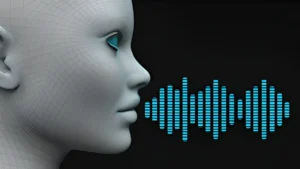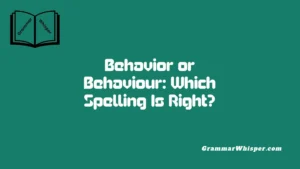In one of my early jobs, a manager invited me to a high-stakes corporate presentation and whispered, “It’s just another dog and pony show.” At first, I found that oddly charming – something playful, maybe even fun. But soon, I saw through the surface. Beneath the lights of slick slideshow decks and scripted speech, I began to see the irony. This expression dates back to 19th-century American entertainment – small, traveling acts with trained dogs and ponies performing tricks for rural crowds. These shows dazzled with spectacle, not substance. Today, this term thrives in boardrooms, political debates, and academic classrooms, carrying a deeper meaning: what looks good may not actually matter.
The phrase has stuck because it perfectly illustrates how style can outweigh value. We’ve all seen it – a polished presentation, flashy optics, and still, no real impact. That’s the modern flavor of this idiom – a critique of the overly performative, the shallow, and the empty showmanship that hides real problems. It’s often used tongue-in-cheek, especially across industries, to mock events where performance, not purpose, takes center stage. When we unpack it today, we’re not just talking about animals doing tricks. We’re talking about the very moment where real progress begins – once we look past the curtain.
What Is a “Dog and Pony Show”? – Definition & Connotation
A dog and pony show is an elaborate presentation or performance, often designed more to impress than to inform. It typically refers to:
- Over-the-top sales pitches
- Political spectacles
- Superficial demonstrations with minimal real value
Denotative meaning: A literal show featuring trained dogs and ponies, originally aimed at entertainment.
Connotative meaning: A metaphorical or sarcastic reference to any performance intended to dazzle rather than deliver real substance.
“The entire press conference was just a dog and pony show for the cameras.”
Emotional Tone & Implication
The phrase is rarely used positively. It implies manipulation, facade, and style over substance.
Etymology of “Dog and Pony Show” – Tracing the Phrase’s Roots
The origin of the phrase is deeply rooted in traveling vaudeville acts and small-town American circuses during the late 1800s and early 1900s.
Historical Roots
- Small-scale circuses featured trained dogs and ponies to entertain rural audiences.
- These were low-budget alternatives to larger traveling circuses like Ringling Bros.
- The acts were portable, attention-grabbing, and designed to draw crowds.
| Term | Origin Period | Key Traits |
| Dog & Pony Shows | Late 1800s | Small-scale, low-budget, mobile entertainment |
| Used Idiomatically | Mid-1900s | Corporate, political, sarcastic tone |
By the mid-20th century, this once-innocent term took on a new role in American English – symbolizing an overproduced but empty spectacle.
Evolution of the Term Over Time
As society changed, so did the usage of “dog and pony show.”
1940s–1970s: The Corporate Uptake
- First adopted in advertising and marketing industries.
- Represented over-the-top product pitches.
- Soon used for any sales presentation involving flashiness.
1980s–2000s: Political Penetration
- Became a favorite phrase among political pundits and journalists.
- Reflected skepticism about the truthfulness of press briefings and campaigns.
2000s-Present: Cultural Cementing
- The phrase is now part of the standard English lexicon, used informally across:
- Business
- Politics
- Entertainment
- Education
“The budget presentation felt like a dog and pony show more than a strategy meeting.”
Modern Usage in Corporate and Business Settings
Today, the term is often heard in corporate boardrooms and startup environments.
Common Scenarios
- Product launch events focused more on visuals than innovation.
- Sales pitches with flashy decks but little strategic depth.
- Meetings staged more for optics than decision-making.
Example
“The quarterly review was a complete dog and pony show, with no real discussion of KPIs.”
Why It Matters
The phrase highlights a disconnect between substance and showmanship.
Key Insight: Many high-profile business events are structured for investor optics or public relations, not actionable business intelligence.
Political Theater: “Dog and Pony Show” in Government & Media
The phrase is a staple in political commentary, especially when discussing public hearings, press conferences, or legislative proposals.
Key Political Contexts
- Congressional hearings with no real outcome.
- Pre-election tours designed more for photo ops.
- Media briefings lacking real data or transparency.
Notable Quote
“This investigation is nothing more than a political dog and pony show.”
Media Framing
- News networks often use the term to suggest partisan posturing.
- Public perception often shifts when media repeatedly labels something as a “dog and pony show.”
Implications
- Erodes public trust.
- Signals performance over policy.
“Dog and Pony Show” in Pop Culture & Entertainment
From sitcoms to stand-up comedy, the idiom is used as shorthand for phony performance.
TV & Film References
- Parodied in shows like The Office, Veep, and The West Wing.
- Featured in comedy sketches mocking corporate culture.
Cultural Critique
- Highlights society’s growing cynicism about what’s “real” versus what’s scripted.
Insight: The phrase often reflects our frustration with inauthenticity in high-stakes environments.
Industry-Specific Contexts: Not Just Politics and Business
Legal Field
- Lawyers may refer to dramatic but unproductive trials as dog and pony shows.
Education
- Parent-teacher events with rehearsed talking points.
- School board meetings designed to avoid controversy.
Healthcare
- Pharmaceutical sales reps delivering exaggerated presentations.
Tech
- Launches that emphasize aesthetic over functionality (looking at you, vaporware).
Idiomatic Dissection – Breaking Down the Phrase
The phrase functions as a metaphor layered with imagery.
Why Dogs and Ponies?
- Dogs: represent tricks, obedience, entertainment.
- Ponies: represent showy parading, cuteness.
Put together, they imply controlled, rehearsed performances.
Emotional Nuances
- Implication of manipulation
- Suggests intent to deceive or mislead
- Critiques lack of authenticity or depth
When to Use the Idiom – And When Not To
While colorful, this phrase carries strong cynical undertones.
When It’s Appropriate
- To critique style-over-substance events
- When describing exaggerated PR efforts
- In casual or semi-formal writing/speech
When to Avoid
- In highly professional settings unless ironic tone is clear
- In academic writing
- If you’re unsure of your audience’s familiarity with idioms
Alternative Idioms
| Idiom | Meaning |
| Smoke and mirrors | Deception or illusion |
| Song and dance | Overly elaborate explanation |
| Dog and pony show | Performance with no substance |
Real-World Examples & Case Studies
Case: Theranos Launches (2014)
- Described by journalists as a “dog and pony show” due to the glitzy launch of unproven technology.
Case: U.S. Congressional Hearings (Various)
- Often labeled dog and pony shows due to partisan theatrics and lack of substantive findings.
Case: WeWork IPO Roadshow (2019)
- Analysts described the presentations as dog and pony shows aimed at distracting from financial instability.
Quote From The Atlantic:
“The hearings were never about uncovering truth – they were always just a dog and pony show.”
The Power of Language: Why Idioms Like These Matter
Idioms like “dog and pony show” are more than just colorful language. They:
- Reflect cultural skepticism
- Serve as linguistic shortcuts for shared disillusionment
- Allow for efficient communication of critique
Broader Linguistic Impact
- Influence how audiences perceive events
- Embed bias into discussions subtly
- Shape public narrative, especially in news and politics
Sociolinguistic Insight
“Language doesn’t just reflect reality. It frames it.”
By using an idiom like “dog and pony show,” a speaker is not merely describing an event; they are casting judgment on its authenticity, intent, and value.
Final Thoughts
The phrase “dog and pony show” has transcended its humble roots in circus culture to become a staple of modern English. Whether you’re watching a political debate, attending a business pitch, or reading about the latest tech launch, the idiom invites you to look deeper – to separate the performance from the purpose.
It serves as a reminder that not all that glitters is gold. Sometimes, it’s just a well-trained poodle and a pretty pony dancing for applause.
FAQs
What is a dog and pony show in business?
A flashy, staged presentation aimed more at impressing stakeholders than communicating valuable information.
Why is it called a dog and pony show?
The term comes from small traveling circuses in 19th-century America that featured performing dogs and ponies.
Is “dog and pony show” an insult?
Generally, yes. It implies superficiality, manipulation, or insincerity.
Can “dog and pony show” be positive?
Rarely. The phrase is usually negative, but it can occasionally imply effort or polish if used humorously.
What are some synonyms for this phrase?
Smoke and mirrors, song and dance, showboating, performance piece.











